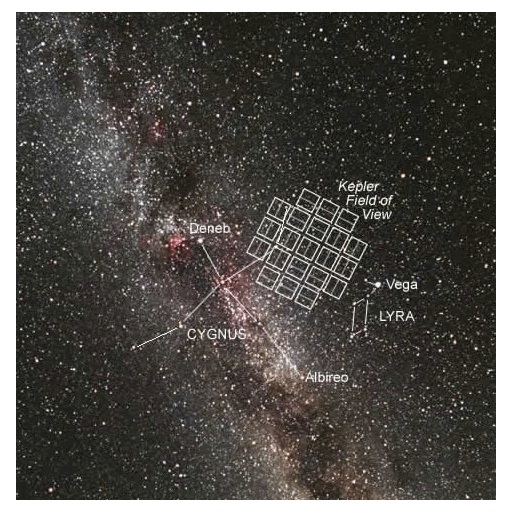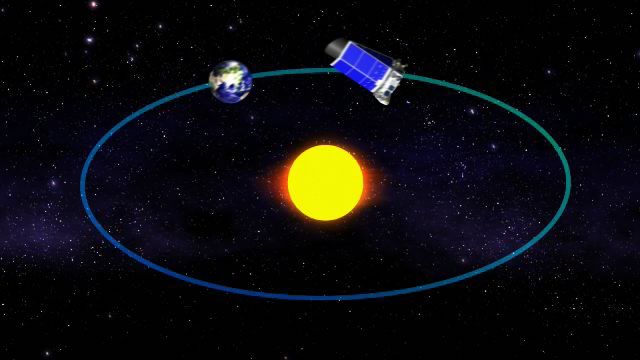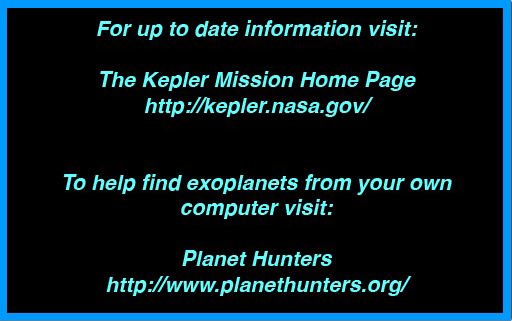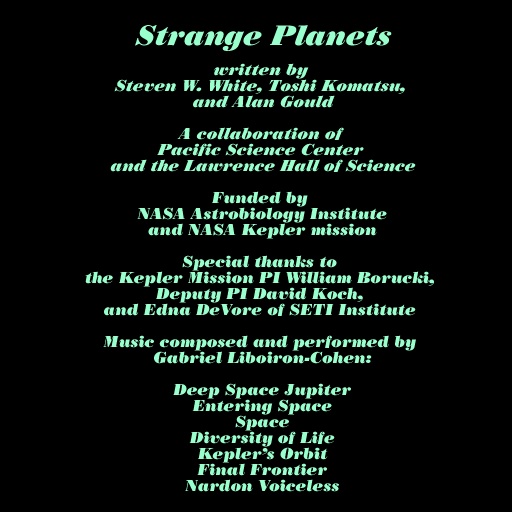Conclusion: Strange Planets
DIGITAL EFFECT: Exoplanets
Turn on all exoplanet markers.
We are finding new extrasolar planets all the time.
But the goal is to find these habitable, Earth-like planets.
DIGITAL EFFECT: Conclusion
Ensure that Cygnus and the Kepler field of view target area are visible. Scale up the Kepler spacecraft image and rotate it to “point” toward the target area.
VISUAL 27a (still): Kepler’s target area

VISUAL 27b (still): Kepler’s CCD pattern

VISUAL 27c (still): Kepler’s first light

Three versions of this are available. One has the star field with the CCD pattern superimposed. Another is just the CCD pattern that you can position over the actual stars in your planetarium—especially suitable for digital star projectors. The third is first light image from the Kepler spacecraft, produced in April 2009.
The NASA Kepler mission was specifically designed to survey our region of the Milky Way galaxy, to discover hundreds of planets. Kepler stared at this section of the sky, that you see here near the constellation Cygnus (the Swan), staring for three and a half years, never blinking, and surveying about 150,000 stars simultaneously.
VISUAL 28 (movie): Kepler’s orbit around the Sun
Kepler is following (trail) Earth in its orbit around the Sun. Every three months, Kepler executes a 90° roll to keep its solar panels pointed towards the Sun and at the same time keep its exquisitely sensitive photometer (light meter) aimed at those 150,000 stars.
VISUAL 29 (movie): Diversity of Life
DIGITAL EFFECT: Exoplanets
Fade off the Kepler spacecraft, Cygnus, and field of view target graphics, and fade on the exoplanet markers one final time.
The ultimate goal is not just to find planets, or even “hot Earths,” but to find Earth-sized planets that are not too hot, and not too cold, but just right for life to develop.
The Kepler mission was designed to settle the age-old question of whether or not planets like ours—small, rocky, and suitable for life—are common. Kepler has already found several small, rocky planets; and planets in the habitable zones of stars. But it has yet to find a small, rocky planet in the habitable zone of a Sun-like star. But it may do so very, very soon!
And underlying everything, Kepler’s results have implications in answering questions about the possibility of life existing elsewhere in our Galaxy. Are intelligent beings common or rare in the Universe? The Kepler mission is a serious first step to get real data that may eventually lead to an answer that question!
VISUAL 30 (still): Learn More
[Fade on a text graphic with the URLs for the Kepler Mission website and the Planet Hunters website.]

You can find out a lot more about this quest from the StrangePlanets web pages, https://sites.google.com/a/planetarium-activities.org/pass/nasa-kepler-mission. [need to update; add 2-D barcode???] You can also join in the search at www.planethunters.org.
Thank you for coming to our planetarium today!
DIGITAL EFFECT: Return Home
Fade off all the planet orbit lines. If necessary,
scale all the planets and the Sun to their default
sizes, and approach Earth. Crossfade the scenes to land on Earth at “today, noon” and “local latitude, local longitude”.
VISUAL 31 (still): Credits


